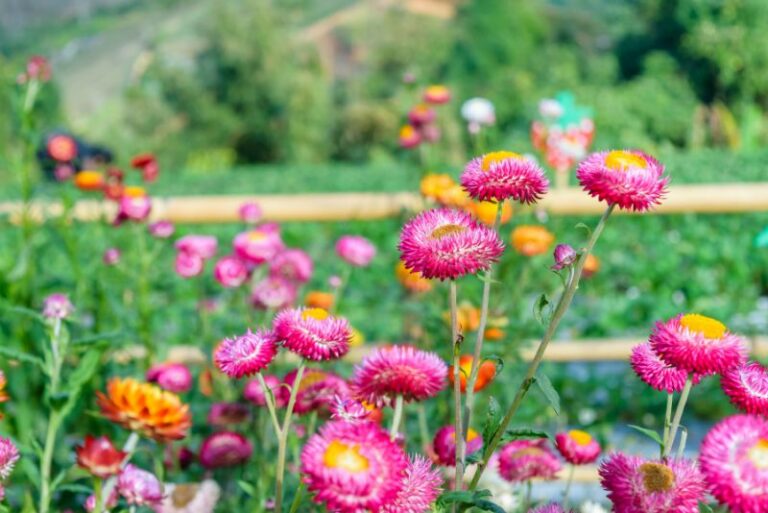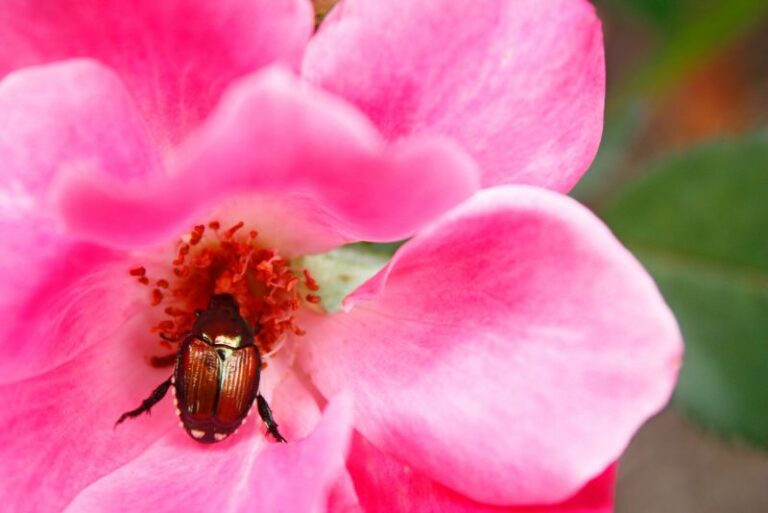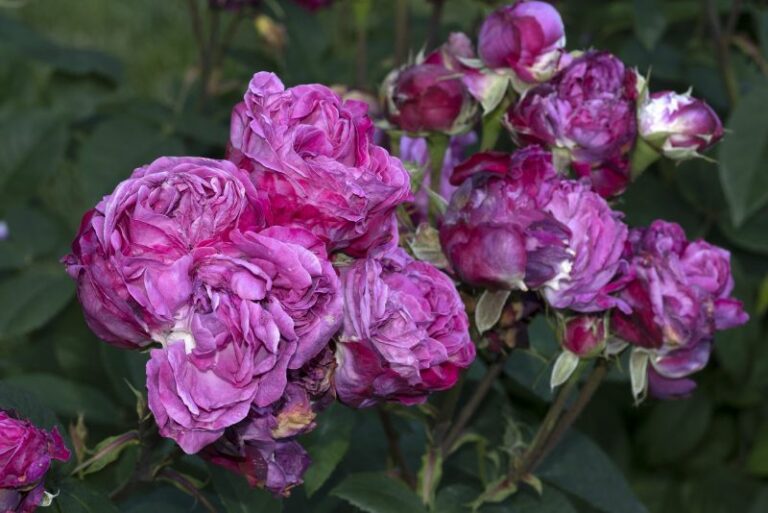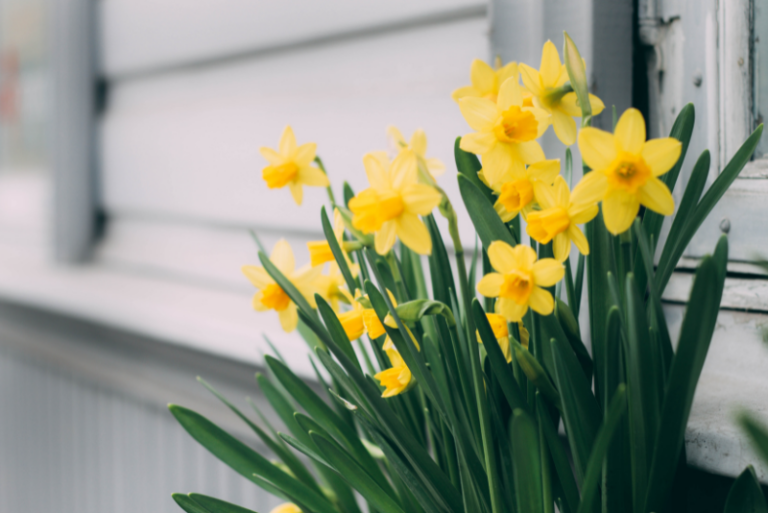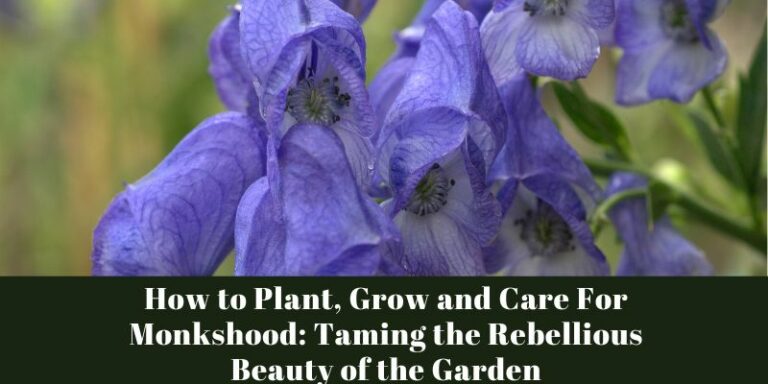Purple Peony Varieties For Your Flower Garden
Peonies are the harbingers of spring, heralding the season with their lush, pillow-like blooms and a fragrance that seems conjured from the realms of nostalgia. In the lexicon of flowers, the peony connotes romance, prosperity, and a happy life, which makes it a beloved choice among both seasoned gardeners and novices.
However, within the peony family, there is a regal variety that stands out for its rarity and richness — the Purple Peony. This deep, velvety hue not only adds a captivating color to your garden but also infuses it with a sense of mystery and elegance. As we venture into the world of gardening with peonies, this comprehensive guide will detail how to select, plant, and maintain these magnificent purple bloomers in your own outdoor sanctuary.
Purple Peonies: A Unique Choice
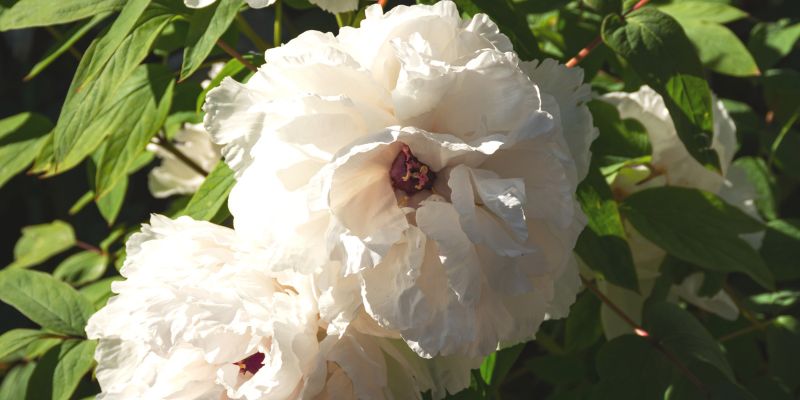
The allure of purple peonies lies in their unusual color within the genus. While peonies in shades of white, pink, and red are more commonly encountered, the deep, royal purples of ‘Bartzella’, ‘Karl Rosenfield’, and ‘Sarah Bernhardt’ varieties offer a more striking alternative for enthusiasts looking to make a statement with their garden choices. These shades not only differentiate them in the landscape but also offer an endearing counterpoint to the more familiar peony colors.
Purple peonies are available in various types, from the highly sought-after tree peonies with their woody stems and large, textural flowers, to the perennial garden varieties that present a bigger, bushier display featuring numerous blooms. They share the same timeless elegance and massive, airy blossoms that peonies are renowned for, yet with the added allure of regal purple tones.
Popular Purple Peony Varieties
Few flowers can match the regal presence of a peony, and when that bloom is underscored by shades of violet, it becomes an irresistible choice. Here are some of the most sought-after purple peony varieties:
‘Bartzella’
‘Bartzella’ is perhaps the most famous of the yellow intersectional hybrid peonies, sometimes referred to as the ‘Itoh’ varieties. Known for their huge, lemon chiffon-yellow flowers, these blooms are a standout in any garden due to their size and hardiness. Intentionally bred for the best characteristics of both parent species, herbaceous and tree peonies, ‘Bartzella’ is an exceptional variety with a dreamy fragrance and a unique ability to flower for an extended period.
‘Karl Rosenfield’
A classic double, ‘Karl Rosenfield’ features tightly packed petals in a deep crimson shade. While not a pure purple, its rich, dark coloration makes it a popular choice for those seeking a more intense hue in the garden. Renowned for its reliability and long-flowering habit, ‘Karl Rosenfield’ is a staple in traditional peony collections.
‘Sarah Bernhardt’
A fragrant blend of soft pinks, ‘Sarah Bernhardt’ can appear more lavender-pink in certain lights, making it a versatile addition to any purple-themed garden. Known for its robust growth and suitability for a wide range of climates, this old variety’s popularity endures for a reason — its timeless beauty and storied past.
Each of these varieties has something unique to offer and selecting the right one for your garden is a deeply personal choice, depending on your local climate, soil conditions, and the desired aesthetic.
Planting and Caring Tips
For the best display, be sure to select a planting site that affords plenty of sunlight, drains well, and will allow your peonies to thrive without overcrowding from other plants. Here are some planting and care tips to ensure your purple peonies flourish:
Soil Requirements
Peonies prefer a neutral pH soil, rich in organic matter to encourage strong, healthy blooms. Amending the soil with compost before planting and a balanced fertilizer during the growing season will help to provide the necessary nutrients.
Sunlight
Peonies adore the sun; a minimum of six hours of direct sunlight is essential to bud production and flower quality. Ensure your chosen site receives ample sunshine and is not shaded by trees or buildings, which could cause leggy or weak growth.
Watering
Peonies are surprisingly drought-tolerant once established but will appreciate regular watering, especially during dry spells or in the early stages of growth. Avoid waterlogged conditions, as peonies are sensitive to root rot.
Maintenance
Deadheading spent blossoms and providing support for particularly heavy flower heads will keep your purple peonies looking their best. In late autumn, cut back the peony foliage and dispose of it to prevent winter harborage of diseases and pests.
With proper care, your peonies can continue to bloom for decades, rewarding you with some of the most beautiful flowers nature has to offer.
Design Ideas with Purple Peonies
The distinctive color of purple peonies offers a myriad of design possibilities. Whether you’re going for a monochromatic scheme with varying purples or using the vivid hue to contrast with other garden flowers, the adaptation of the ‘purple vision’ can transform your garden into a tranquil, elegant space.
Borders and Edges
Planting purple peonies along borders and edges can create a lush, colorful frame for your garden. The robust nature of these plants will help to unify and define your garden beds, providing a sense of structure even when out of bloom.
Group Planting
Mass planting purple peonies in groups can create a dramatic effect, forming waves of color that are both visually striking and soothing to the soul. It’s a simple yet effective way to make your garden a welcoming haven.
Accent Pieces
Use purple peonies as stunning individual accent pieces or mixed amongst other plant types to create interest. The contrast of purple peonies against green foliage or lighter shades of flowers can draw the eye and serve as a focal point in your garden’s composition.
Benefits of Growing Purple Peonies
The decision to add purple peonies to your garden is not just for their aesthetic value. These blooms offer a multitude of benefits that appeal to all gardening sensibilities:
Aesthetic Appeal
The sheer beauty of peonies is unmatched, and purple peonies take that appeal to the next level. Whether as a cut flower in a vase or in the natural setting of the garden, their presence can transform any space into a visual delight.
Fragrance
Peonies are renowned for their wonderful scent, which is both intoxicating and soothing. Their fragrance can redefine the atmosphere of your garden, turning a casual stroll into a sensory experience.
Symbolism
Traditionally, the peony is a symbol of prosperity, good fortune, and a life full of beauty — values that are universally cherished. In sharing the joy and abundance signified by the bloom, you not only grace your garden with their presence, you imbue it with a deeper, cultural significance.
Conclusion
Enriching your garden with the expressive purple peony can bring a sense of luxury and grandeur to your outdoor space. As we’ve explored, these blooms are more than just ornamental. They offer a unique aesthetic, practical adaptations to design, and a range of benefits that elevate the garden experientially and symbolically.
Now that you’re armed with the knowledge to plant and care for these delightful flowers, don’t wait for the next gardening season to bloom before you act. With careful selection and thoughtful consideration of your garden’s needs, the purple peony can make the season — and your garden — truly come alive.

